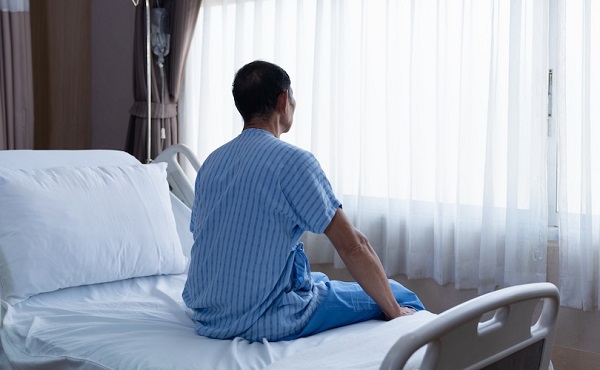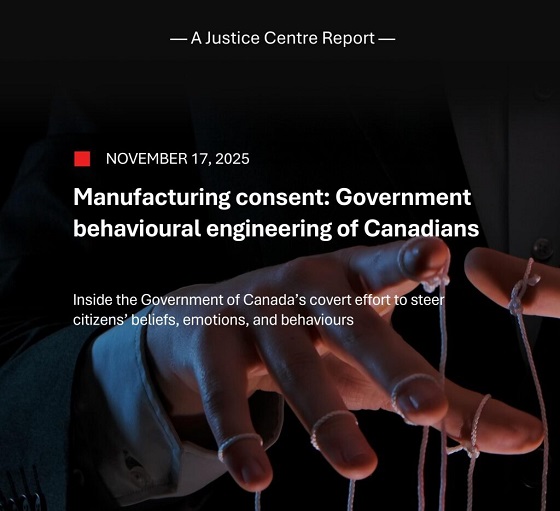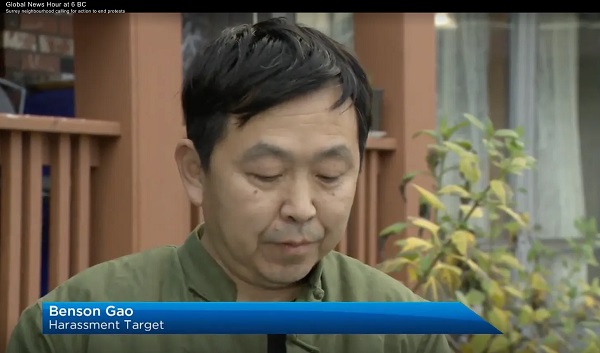MAiD
Canada’s devastating assisted suicide regime is tearing families apart

From LifeSiteNews
The father stated that his daughter’s ‘capacity to consent to [assisted suicide] is impacted by mental illness’ and that she had likely been ‘unduly influenced by a third party.’
Last year, I noted in First Things that of all the perverse lies told by proponents of euthanasia, one of the worst is their claim that it reduces suffering in society. The precise opposite is true. We have seen this in Canada time and again; heartbroken relatives reaching out to the media to explain how the assisted suicide of a loved one has left them destroyed. Each person who dies at the end of a doctor’s needle leaves loved ones behind; many of them are deeply traumatized by the experience.
Gary Hertgers of British Columbia found out that his sister, Wilma, had died by lethal injection when her building manager called him to inform him that the coroner had just left her apartment. A doctor told the Globe and Mail that he still has nightmares about his father’s euthanasia death, which the family opposed. Two sisters in B.C. found out that their mother had died through euthanasia by text message. Another mother whose troubled son was approved for euthanasia only managed to have that approval rescinded by launching a media campaign.
The CBC is now reporting on a similar story. A desperate father has requested that Court of King’s Bench Justice Colin Feasby in Alberta examine the process that led to two of three doctors approving his daughter for euthanasia (which is referred to in Canada as “MAiD,” or medical assistance in dying). His daughter, who suffers from autism, is only 27 years old. The court has issued a publication ban to protect the identities of the family members and the doctors involved; CBC identified the father as “W.V.” and the daughter as “M.V.”
According to court proceedings, M.V. was approved for euthanasia in December – signoff by two doctors is required to meet the threshold. She was given the date of February 1 to receive the lethal injection. M.V. still lives with her father, who managed to obtain a temporary injunction halting the impending euthanasia (the CBC reported that this “prevent(ed) M.V. from accessing MAiD”) the day before her scheduled death. Her father argued to the court that “M.V. suffers from autism and possibly other undiagnosed maladies that do not satisfy the eligibility criteria for MAiD.”
The daughter’s lawyer, Austin Paladeau, countered by arguing that M.V. is “not trying to withhold or hide anything” by her failure to supply medical documents justifying euthanasia, but that “She’s saying ‘it’s none of (W.V.’s) or the public’s business, I’ve been approved by two doctors, I am entitled to this and, court, it’s none of your business either.’”
Her father, who still cares for her, feels differently; her death is very much his business. His lawyer, Sarah Miller, argued in a brief: “As it stands, AHS (Alberta Health Services) operates a MAiD system with no legislation, no appeal process and no means of review.”
Miller is asking the Calgary judge for a judicial review of M.V.’s approval for euthanasia, and W.V. submitted a 2021 report to the court from a neurologist who stated that M.V. was “normal”; the father also stated that M.V.’s “capacity to consent to MAiD is impacted by mental illness” and that she had likely been “unduly influenced by a third party.” M.V.’s lawyer argued that the issue at stake was medical autonomy itself, stating:
He’s at risk of losing his daughter and while this is sad, it does not give him the right to keep her alive against her wishes. One of the real challenging parts of this process… is what’s actually happening. I completely understand (W.V.) does not want his daughter to die… I represent (M.V.), I don’t want her to die either but that doesn’t play into account here. Even though we have or may have very strong views… at the end of the day this is (M.V.’s) decision.
The judge is grappling with the case. “As a court, I can’t go second guessing these MAiD assessors… but I’m stuck with this: the only comprehensive assessment of this person done says she’s normal,” Feasby stated. “That’s really hard.” He called the case a “vexing” one and, according to the CBC, “reserved his decision on whether he’ll set aside the temporary injunction preventing M.V. from accessing MAiD… the other part of his decision will deal with whether a judicial review will take place, which would examine how doctors came to sign off on M.V.’s MAiD application.”
I hope Feasby makes the right decision. If he does not, a father will face the horror of a doctor coming into his home and giving his daughter a lethal injection against his will – with the entire force of the state endorsing the doctor’s right to do so. At the end of the day, this case is vexing – but it really isn’t hard.
Great Reset
Canadian government forcing doctors to promote euthanasia to patients: report

From LifeSiteNews
“Promises were made that no doctor would ever be coerced to participate in euthanasia… No hospital would have to do it. No nursing home, no palliative care unit would be forced to host doctors killing patients who wanted to die. All of that was a complete fiction. All of those things have now happened”
Canadian doctors are warning that Health Canada’s push for euthanasia is forcing doctors to suggest assisted suicide to patients.
In a November 6 video by Christian filmmaker Frank Panico, three Canadian doctors, Will Johnston of Vancouver, David D’Souza of Toronto, and Catherine Ferrier of Montreal, revealed that physicians are forced to discuss euthanasia or so-called “medical assistance in dying” (MAID) with vulnerable patients according to Health Canada protocol.
“If a physician is suggesting euthanasia as an option or a treatment option for their pain or their suffering, then that is a very serious thing,” D’Souza, a family physician and a pain specialist in Ontario, warned.
“As a patient is more likely to take this option given that a health professional has suggested it,” he continued. “I think it does severe harm to the doctor patient relationship when physicians are now allowed and even suggesting euthanasia as a means to end their suffering.”
D’Souza’s concerns are in response to 2023 guidelines by Health Canada, titled “Model Practice Standard for Medical Assistance in Dying to Ensure Consistent and Safe Practice in Canada.” The document mandates that doctors and nurses must tell a patient about the assisted suicide options available to them while discussing medical care.
“[Physicians/Nurse Practitioners] must take reasonable steps to ensure persons are informed of the full range of treatment options available to relieve suffering,” subsection 6.1 notes, falsely presenting suicide as “treatment.”
Echoing D’Souza’s warning, Johnston, a Vancouver family physician and head of B.C.’s Euthanasia Resistance Coalition, explained that the regulations contradict previous promises that medical personnel would not be forced to participate in the practice.
“Promises were made that no doctor would ever be coerced to participate in euthanasia, no doctor or nurse would ever lose their job because they wouldn’t cooperate with euthanasia,” he declared.
“No hospital would have to do it. No nursing home, no palliative care unit would be forced to host doctors killing patients who wanted to die. All of that was a complete fiction. All of those things have now happened,” Johnston lamented.
Similarly, Ferrier of the Division of Geriatric Medicine at McGill University Health Centre recalled doctors pushing assisted suicide on a family member who had brain cancer.
According to Ferrier, when the first doctor assessed the man, he immediately presented only two options: euthanasia or palliative sedation. He offered no other alternatives, such as psychological or social support that could help restore his will to live.
The doctor eventually referred him to a psychiatrist, but Ferrier felt that the psychiatrist’s only focus was determining whether the patient was mentally competent to choose euthanasia – not on exploring ways to relieve his suffering while helping him continue living.
“These two doctors were guys his age, and I’m convinced that they looked at him and said: ‘I wouldn’t want to be in his shoes so he’s better off dead, and he is competent to make this decision,’” Ferrier recalled.
The doctors’ warnings come just a week after Inclusion Canada CEO Krista Carr revealed that many disabled Canadians are being pressured to end their lives with euthanasia during routine medical appointments.
Carr’s statement supports internal documents from Ontario doctors in 2024 that revealed Canadians are choosing euthanasia because of poverty and loneliness, not as a result of allegedly terminal illness.
In one case, an Ontario doctor revealed that a middle-aged worker, whose ankle and back injuries had left him unable to work, felt that the government’s insufficient support was “leaving (him) with no choice but to pursue” euthanasia.
Other cases included an obese woman who described herself as a “useless body taking up space,” which one doctor argued met the requirements for assisted suicide because obesity is “a medical condition which is indeed grievous and irremediable.”
At the same time, the Liberal government has worked to expand euthanasia 13-fold since it was legalized, making it the fastest growing euthanasia program in the world.
Currently, wait times to receive actual health care in Canada have increased to an average of 27.7 weeks, leading some Canadians to despair and opt for euthanasia instead of waiting for assistance. At the same time, sick and elderly Canadians who have refused to end their lives have reported being called “selfish” by their providers.
The most recent reports show that euthanasia is the sixth highest cause of death in Canada. However, it was not listed as such in Statistics Canada’s top 10 leading causes of death from 2019 to 2022.
Asked why it was left off the list, the agency said that it records the illnesses that led Canadians to choose to end their lives via euthanasia, not the actual cause of death, as the primary cause of death.
According to Health Canada, 13,241 Canadians died by euthanasia lethal injections in 2022, accounting for 4.1 percent of all deaths in the country that year, a 31.2 percent increase from 2021.
Health
Lack of adequate health care pushing Canadians toward assisted suicide

From LifeSiteNews
The family of an elderly man is speaking out about the terrible hospital conditions that led their father to request euthanasia before he died of natural causes.
The family of Cleo Gratton, an 84-year-old retired diamond driller who died earlier this month in Chelmsford, Ontario, of natural causes after being approved for assisted suicide, is speaking publicly about their appalling experience in the Canadian healthcare system.
According to the CBC, the elderly man “told his family he would rather die than go back to Health Sciences North in Sudbury,” and that a recent stay there found Gratton, who was suffering from heart disease and kidney failure, spending one night in the emergency room and then being transferred to a bed sitting in the hallway on the seventh floor.
“There were no lights, all the bulbs in that hallway had been completely removed,” his daughter, Lynn, told the CBC. “The only light we had was almost like a desk lamp that had been bolted to the wall. Patients are passing by, nurses are going by, no privacy, no compassion, no dignity.” The visit took place in mid-October, after which Gratton decided to apply for “medical aid in dying,” or assisted suicide.
Lynn said that nurses had to use headlamps to inspect her father’s feet, and that the experience was “just one thing after another and it really opened our eyes to what’s going on in our hospitals. My dad said, ‘Push, push, push for change. Make people aware of what’s gong on. Open the discussion, bring it to your MP, your MPP, keep going straight up.”
His family is now honoring his wishes to speak out about his experience. The doctors and nurses, Lynn emphasized, were “amazing,” but she noted that they seem overworked. “Why are they still taking in patients if we have an overcrowding issue and they have no place to put these people?” she said.
Cleo Gratton, who died of natural causes surrounded by his family before he could go through with assisted suicide, is just the most recent of many examples of Canadians opting for assisted suicide because they could not access the care that they actually desired.
In Quebec last year, Norman Meunier, a quadriplegic man, developed bedsores after four days left on an ER stretcher without a good mattress. That experience combined with lack of available homecare pushed him to request, and receive, assisted suicide.
An unnamed woman in her 80s, referred to in a MAID report as “Mrs. B,” received MAID earlier this year after requesting but being denied palliative or hospice care. Instead, with her spouse burning out as the result of her care, a rushed MAID assessment was completed, and she died by lethal injection.
In 2022, 44-year-old Winnipeg woman Sathya Dhara Khovac died by euthanasia after failing to receive the homecare resources she had desperately sought. In her posthumous obituary, she said she could have had more time if she’d had more help.
In 2019, 41-year-old Sean Tagert was euthanized after spending years attempting to find and fund the homecare and resources he needed to stay in the community where his son lived. He did not want to die but felt that he had no other choice.
And, among other stories, at least four Canadian veterans were offered assisted suicide in lieu of the unavailable mental health supports they were requesting.
Stories of Canadians seeking palliative care, mental health resources, homecare, and other medical support finding that the only option available to them is assisted suicide have become routine over the past several years. Euthanasia has become a pressure valve for an overworked and under-funded healthcare system serving an aging population increasingly need of complex care — and if assisted suicide for mental illness is legalize, things will get much, much worse.
-

 Alberta1 day ago
Alberta1 day agoNational Crisis Approaching Due To The Carney Government’s Centrally Planned Green Economy
-

 Alberta1 day ago
Alberta1 day agoAlberta Offers Enormous Advantages for AI Data Centres
-

 Alberta1 day ago
Alberta1 day agoCalgary mayor should retain ‘blanket rezoning’ for sake of Calgarian families
-

 Bruce Dowbiggin1 day ago
Bruce Dowbiggin1 day agoSports 50/50 Draws: Make Sure You Read The Small Print
-

 COVID-191 day ago
COVID-191 day agoNew report warns Ottawa’s ‘nudge’ unit erodes democracy and public trust
-

 Censorship Industrial Complex1 day ago
Censorship Industrial Complex1 day agoQuebec City faces lawsuit after cancelling Christian event over “controversial” artist
-

 espionage1 day ago
espionage1 day agoTrump says release the Epstein files
-

 Carbon Tax12 hours ago
Carbon Tax12 hours agoCarney fails to undo Trudeau’s devastating energy policies









